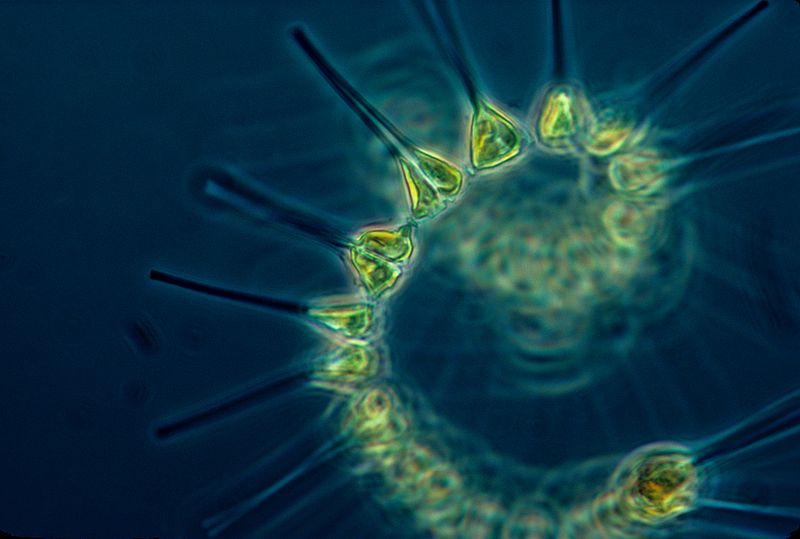Science News
Phytoplankton Decline

What happens if the bottom of the food chain disappears? While phytoplankton haven’t yet disappeared, scientists are finding that their populations are declining at an alarming rate—at about 40% since 1950.
These microscopic marine algae form the basis of the marine food chain and sustain a number of diverse species ranging from tiny zooplankton to large marine mammals, seabirds, and fish.
“Phytoplankton is the fuel on which marine ecosystems run. A decline of phytoplankton affects everything up the food chain, including humans,” according to Daniel Boyce the lead author of a new study published in the July 29th edition of Nature.
The cause of the phytoplankton decline? Rising ocean temperatures.
Ed Yong in Discover writes that:
Phytoplankton need sunlight to grow, so they’re constrained to the upper layers of the ocean and depend on nutrients welling up from below. But warmer waters are less likely to mix in this way, which starves the phytoplankton and limits their growth.
Using an unprecedented collection of historical and recent oceanographic data, Boyce and his team documented phytoplankton declines of about 1% of the global average per year. Again, from Discover:
Boyce’s study… really began in 1865, when an Italian priest and astronomer called Father Pietro Angelo Secchi invented a device for measuring water clarity. His “Secchi disk” is fantastically simple—it’s a black-and-white circle that is lowered until the observer can’t see it any more. This depth reveals how transparent the water is, which is directly related to how much phytoplankton it contains. This simple method has been used since 1899. Boyce combined it with measurements of the pigment chlorophyll taken from research vessels, and satellite data from the last decade.
The scientists found that long-term phytoplankton declines correlated directly with rising sea surface temperatures and changing oceanographic conditions. Their data also matched fluctuating weather patterns such as El Niño.
While rising ocean temperatures may contribute only partly to the phytoplankton decline (articles in Nature and the BBC also mention ocean circulation, wind and over-fishing), we should pay attention. For phytoplankton not only feeds the seas, it also, according to the BBC, sustains all life. “Photosynthesis by phytoplankton removes carbon dioxide from the air and produces oxygen.” And right now, we can use all the carbon dioxide removal we can get!